How to Sell Amazon Large Bulky / Extra-Large (Oversize) Products
Download Amazon Seller Guide
This guide will help you get started, understand the basics of Amazon selling, and explain in simple words how it all works.

If you are an Amazon seller looking to expand sales beyond standard offerings, selling large, bulky, or extra-large (oversize) products can be an excellent opportunity. These categories are typically less competitive and have solid profit margins.
However, selling large and bulky items differs from standard-size products in many ways.
In this post, we'll cover everything you need to know about selling Amazon large bulky and extra-large products, from understanding the requirements and fees to optimizing your shipping processes.
What Are Amazon Large Bulky / Extra-Large Products?
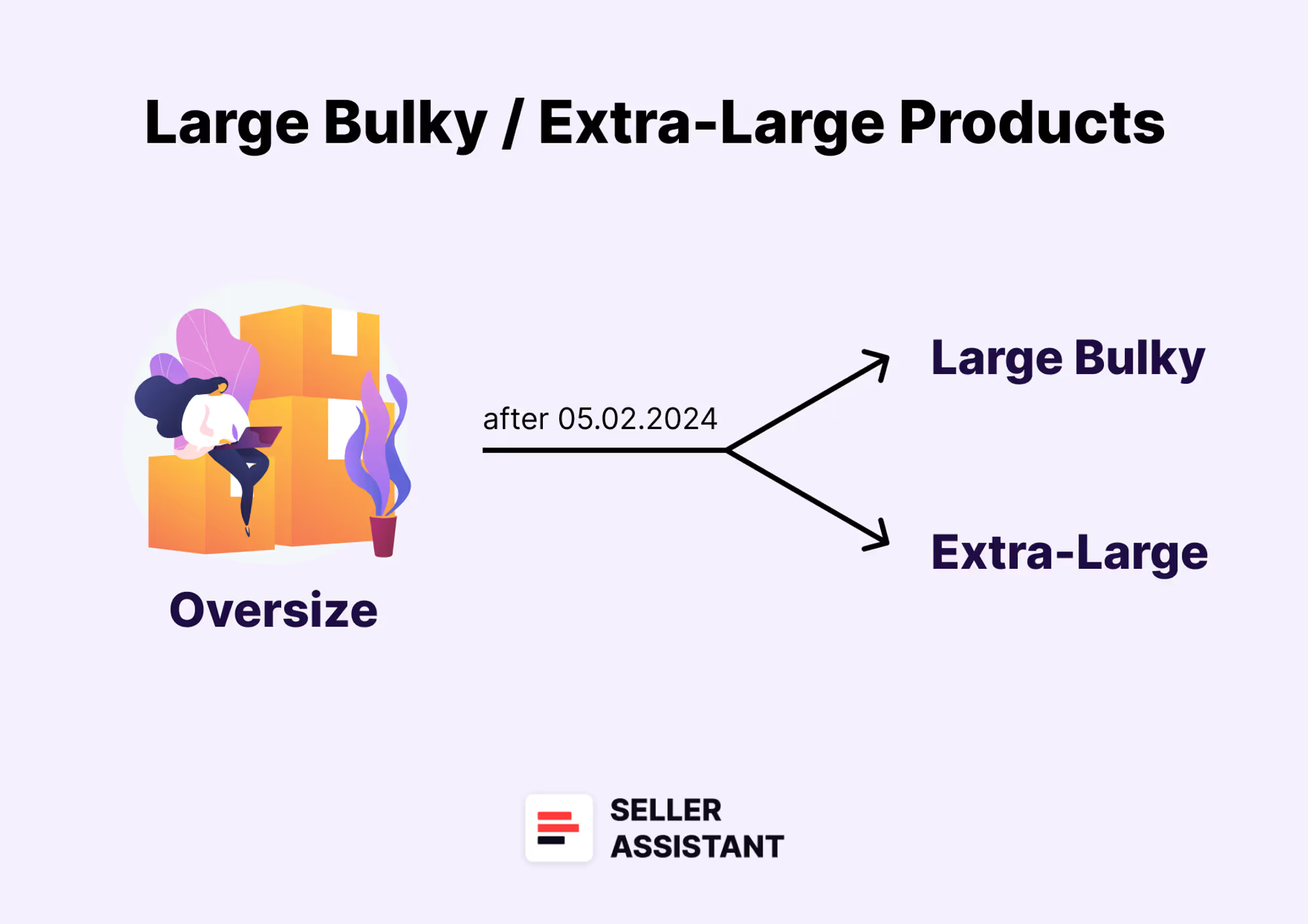
Related: Amazon FBA for Beginners
Amazon FBA large bulky and extra-large inventory (previously known as "oversize") are products bigger and heavier than the standard inventory. These products require special handling, fulfillment, storage, and shipping.
Examples include large outdoor furniture, trampolines, kayaks, sports equipment, TV screens, etc.
Amazon charges extra fees for products that surpass their standard limits, and the shipping and fulfillment options for these products are different from those of standard-sized items.
As of February 5, 2024, Amazon has replaced the oversize product size tiers with new categories of large bulky and four extra-large sizes.
Related: Amazon Large Bulky / Extra-Large (Oversize) Products: All You Need to Know
How Does Amazon FBA Work. Is Amazon FBA worth it in 2024?
What Products Are Considered Large Bulky / Extra-Large?
Amazon uses five different size tiers for large bulky and extra-large products. Large bulky applies to items weighing up to 50 lbs or having a dimensional weight exceeding specific limits. Extra-large refers to products exceeding 50 lbs in weight or having significant dimensions that make them difficult to store or ship efficiently. The extra-large tier has 4 sub-tiers.
Amazon's large bulky and extra-large tiers
The breakdown of Amazon's tiers includes two categories: large bulky and extra-large.
.avif)
Related: Seller Assistant Extension Review
Seller Assistant — the Ultimate Tool for Amazon Online Arbitrage
How to Dropship on Amazon with Seller Assistant
Amazon Wholesale: How to Sell Wholesale on Amazon
Large bulky
Large bulky are items larger than standard-sized products with a shipping weight of up to 50 pounds, a longest side of up to 59 inches, a median side of up to 33 inches, a shortest side of up to 33 inches, and a length of up to 130 inches.
Extra-large
Extra-large items have a unit weight or dimensional weight larger than 50 lbs, a longest side over 59 inches, a median side over 33 inches, a shortest side over 33 inches, and a length of up to 130 inches. The extra-large tier is further divided into four sub-tiers based on shipping weight, ranging from 0 to 50 pounds to over 150 pounds.
- Extra-large 0 to 50 lb — products with a shipping weight of up to 50 pounds;
- Extra-large 50+ to 70 lb — products with a shipping weight of 50+ to 70 pounds;
- Extra-large 70+ to 150 lb — products with a shipping weight of 70+ to 150 pounds;
- Extra-large 150+ lb — products with a shipping weight of over 150 pounds.
How to find out the large bulky or extra-large tier?
When calculating FBA fulfillment fees, Amazon uses dimensional weight if it is higher than the unit weight for products categorized as small, large, bulky, or extra-large (excluding items exceeding 150 lbs). Products exceeding the size limitations for a specific tier will be classified into the next higher tier. To find out your size tier, follow the steps below.
Step 1. Find out dimensional measurements
Accurately measure the product's length, width, and height.
Step 2. Determine product weight
Find out the product's actual weight (unit weight).
Step 3. Calculate dimensional weight
Utilize Amazon's dimensional weight formula ((length x width x height) divided by 139) to calculate the dimensional weight. The greater value between the unit weight and dimensional weight is considered the shipping weight.
Step 4. Compare the size tier
Refer to Amazon's table for large bulky and extra large size tier specifications (below). Compare your product's weight and dimensions to these specifications to identify the appropriate size tier.
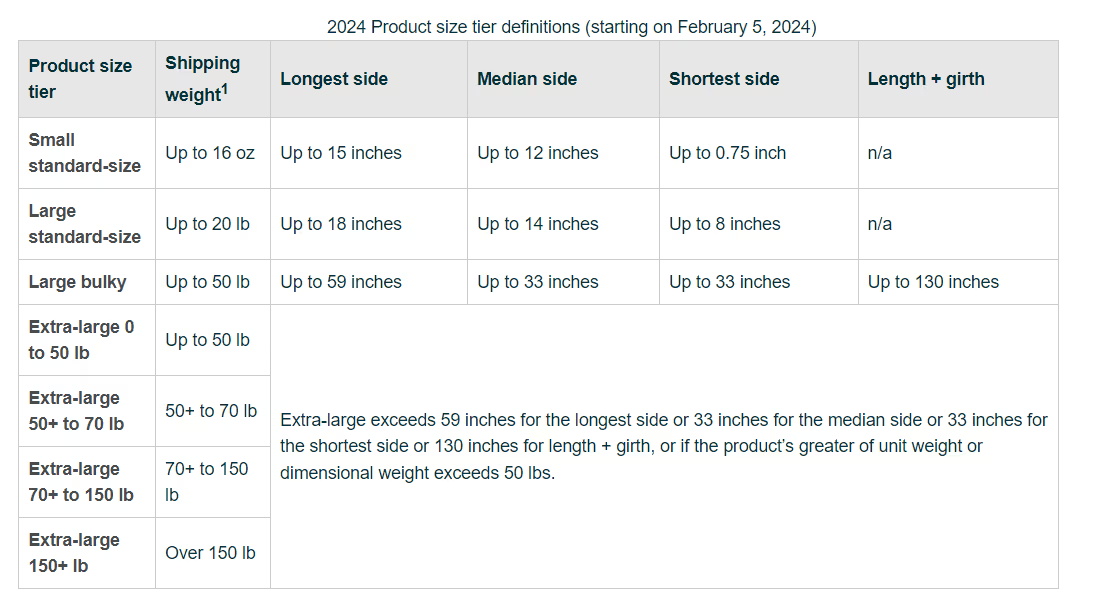
How to Quickly Find Out If the Product Is Large Bulky / Extra-Large?
Determining large bulky and extra-large inventory size tiers may be challenging for some sellers. However, there is a way to do it fast.
Seller Assistant lets you identify whether a product belongs to a large bulky or extra-large size tier directly on the Amazon product and search pages. If a product belongs to a large bulky or extra-large size tier, Seller Assistant App will show you a large bulky and extra-large product notification.
If a Red Box icon is displayed on your Amazon product or search pages, or in the Side Panel View, that indicates the product is large bulky, or extra-large.

How Does Amazon FBA Work for Large Bulky / Extra-Large Inventory?
If you use Amazon FBA to deliver orders, you must send your inventory to Amazon’s fulfillment centers, where they are stored until your customers buy it. When a buyer purchases your product, Amazon will pick, pack, and ship the item to the customer.

Steps to send large bulky / extra-large inventory to Amazon
Step 1. Check size and weight limits
Ensure your products meet the size and weight limitations for large bulky or extra-large items.
Step 2. Calculate fulfillment fees
Use the FBA&FBM profit calculator to estimate the storage and fulfillment costs for your specific products.
Step 3. Prepare your products
Package your large bulky or extra-large items according to Amazon's guidelines, using sturdy packaging that can withstand shipping. Consider SIOC requirements if applicable.
Step 4. Send inventory to Amazon
Ship your products to a designated Amazon fulfillment center, following their instructions for labeling and preparation.
What Are Amazon Large Bulky and Extra-Large FBA Fees?
Amazon large bulky and extra-large fees depend on the product’s size and weight tier. The fees range from $9.73/lb for large bulky products to $194.95/lb for extra-large products. They differ for apparel and non-apparel, and dangerous and non-dangerous goods.
FBA fulfillment fees
Non-standard-size non-apparel rates
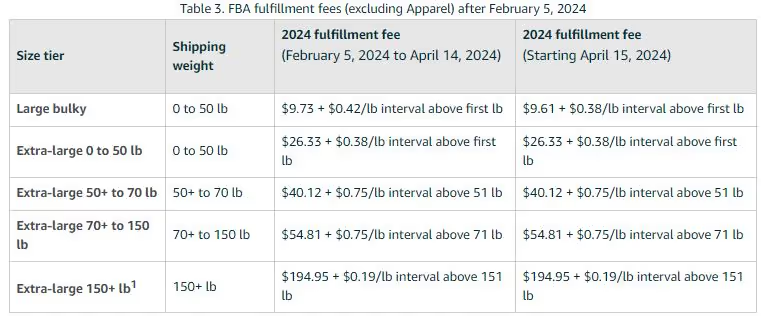
Non-standard-size apparel rates
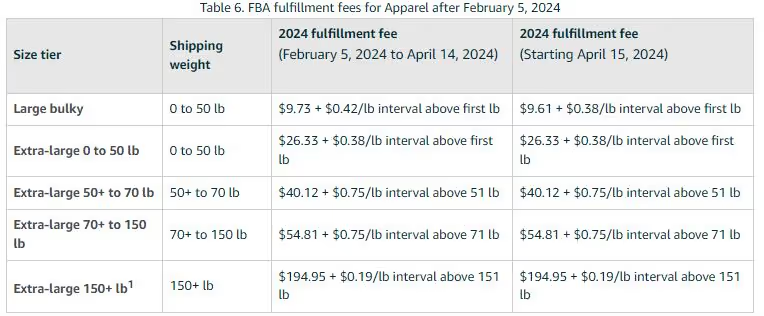
Non-standard-size dangerous goods rates

FBA inbound placement service rates
Amazon charges the FBA inbound placement service fee for distributing inventory to designated fulfillment centers closer to customers.

Storage fees
Storage fees for storing large bulky and extra-large inventory in Amazon warehouses are also higher than for standard goods. Storage fees are calculated based on the daily average volume of the space inventory occupies. The rate is based on product type, size tier, and time of year.
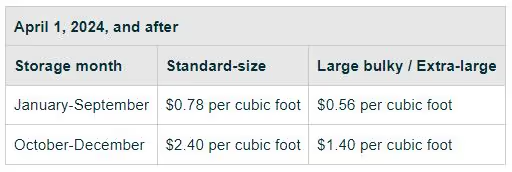

It’s important to note that these fees are in addition to the standard FBA fees, referral fees, and other charges that may apply to your product. As an Amazon seller, it’s essential to consider these fees when pricing your product and calculating your profit margins.
Tip. To accurately account for all large bulky and extra-large product fees, Amazon sellers apply Amazon fee calculators. One of the best Amazon profit calculators is Seller Assistant’s FBM&FBA calculator. It helps you quickly calculate all FBA fees and expenses directly on the Amazon product page and in the Side Panel View on any website.
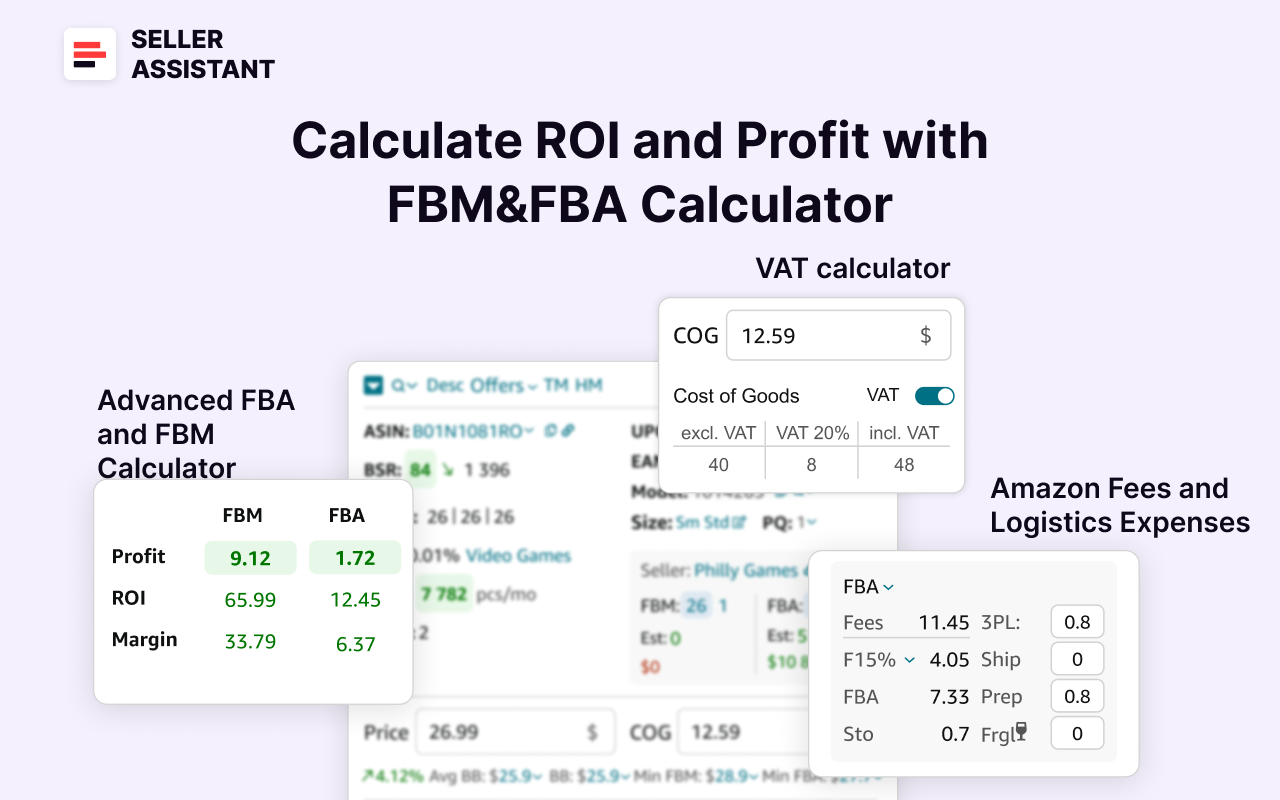
Related: Amazon FBA Fees 2024
Amazon FBA Storage Fees Explained
How to Package Large Bulky / Extra-Large Items?
Large bulky and extra-large inventory must be packaged according to the general Amazon rules, and also have to meet specific size tier requirements.
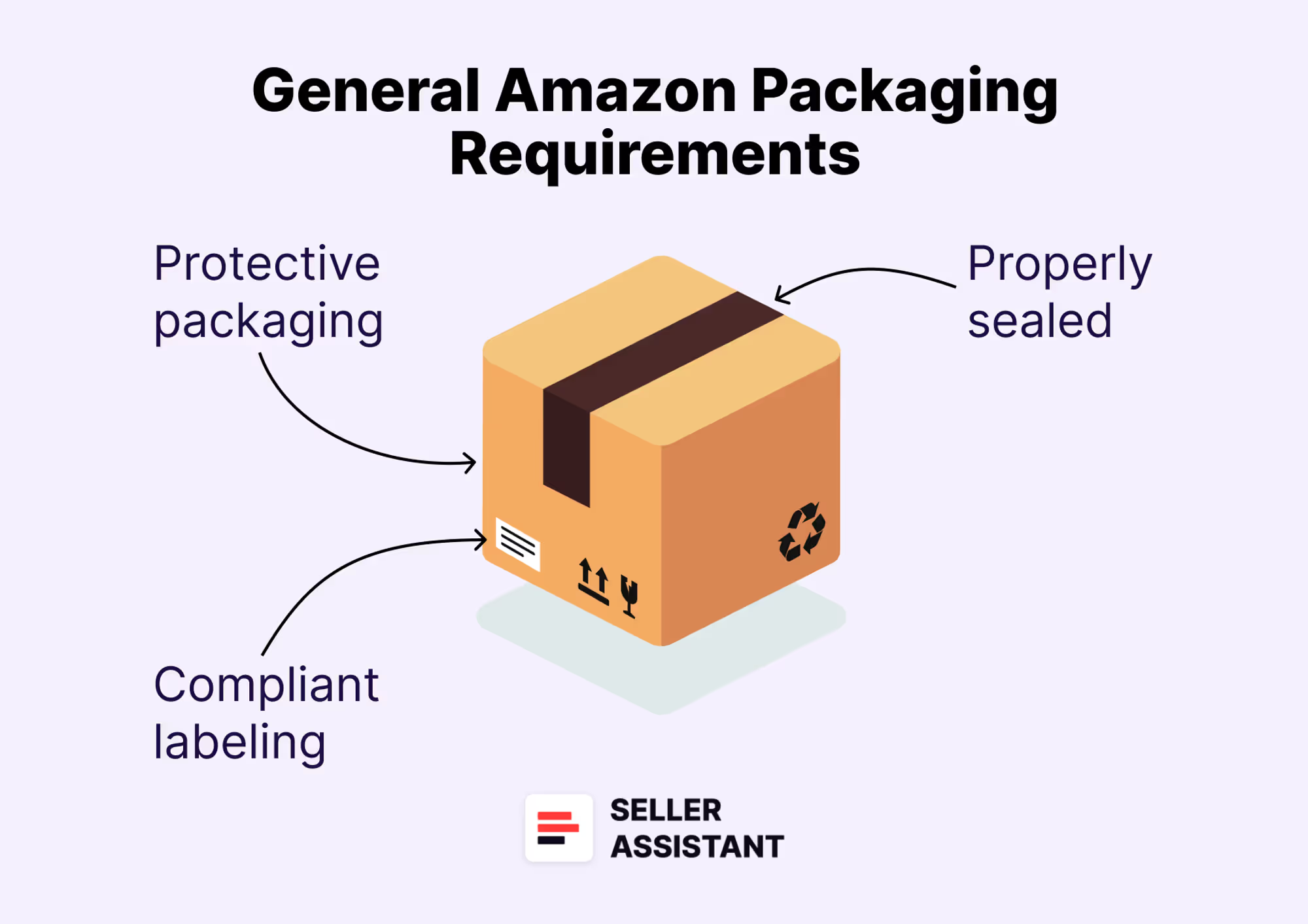
General requirements
Sturdy and protective packaging
Regardless of size tier, your packaging needs to be strong enough to withstand the rigors of shipping. This means using high-quality cardboard boxes, wooden crates, or other suitable materials to handle the weight and potential impacts during transportation.
Properly sealed
Ensure your boxes are securely sealed with strong packing tape to prevent them from opening during transit.
Compliant labeling
Clearly label the package with the recipient's complete address and your return address. Label the package with the appropriate barcodes and ASIN labels.
Large bulky items (under 50 lbs)
While there aren't specific size limitations for Large items (up to 50 lbs), it's generally recommended to follow standard packaging guidelines for smaller items. This means using snug-fitting boxes with minimal empty space to prevent items from shifting and getting damaged.
Extra large items (over 50 lbs or exceeding size limits)
Heavy-duty packaging
Extra-large items require extra-strong packaging materials to support their weight and prevent damage. Consider using double-walled cardboard boxes, wooden crates, or strapped pallets for heavier items.
Pallet considerations
If using pallets, ensure they are the proper size and weight capacity for the item. Secure the item to the pallet using straps or shrink wrap to prevent movement during shipping.
Fragile or delicate extra-large items
For fragile or delicate extra-large items, provide additional internal protection within the box or crate. This could involve using packing peanuts, bubble wrap, or other cushioning materials to prevent damage from impacts.
Ships in Own Container (SIOC)
Package length
If the longest side (length) of your package is between 70 and 96 inches, it must be classified as Ships in Own Container (SIOC). This means your item should arrive at the Amazon facility in its original packaging and should be able to withstand delivery to the buyer without requiring additional boxing from Amazon.
SIOC requirements
For SIOC items, ensure your original packaging is strong enough to survive transportation without damage.
Tip. If your item is fragile or contains hazardous materials, additional packaging and labeling regulations might apply. Ensure you comply with any specific regulations for such products.
How to Ship Large Bulky / Extra-Large Items to Amazon?
To ship large bulky / extra-large items to Amazon, there are various options available to choose from. Below are some of the most popular shipping options.
.avif)
LTL (Less Than Truckload) shipping
LTL shipping is a budget-friendly choice for shipping large bulky / extra-large items. With LTL shipping, you pay only for the space your product occupies on the truck.
FedEx Freight
FedEx Freight is another well-known option for shipping large bulky / extra-large products. It provides services such as standard LTL, expedited LTL, and volume LTL.
UPS Freight
UPS Freight is a dependable option for shipping large products. They offer several services, including LTL, truckload, and air freight.
Amazon's Partnered Carrier program
Amazon's Partnered Carrier program is an excellent option for sellers who want a cost-effective way to ship their large bulky / extra-large products. This program provides discounted rates on shipping for Amazon sellers.
FAQ
Can you sell big items on Amazon?
Yes, you can sell big items on Amazon! They offer fulfillment options for large bulky and extra-large items, though there are size and weight restrictions and fees to consider.
What is the largest size box you can send to Amazon FBA?
There's no single largest box size for FBA. The maximum depends on the total dimensions. No side can exceed 25 inches, but the combined length, width, and height can't be more than 63.5 inches (or 161 cm) for standard-size items. However, there are larger size tiers for bulky items with specific requirements.
What is the maximum box size for Amazon seller?
Amazon seller box dimensions can't exceed 25 inches on any side for standard-sized items sent to FBA. However, there are larger size tiers for bulky items with specific requirements.
What are the dimensions of oversize Amazon seller?
There's no single "oversize" dimension for Amazon sellers. Oversize refers to products exceeding standard size limits (typically 18x14x8 inches and 20 lbs). Extra large can exceed 108 inches in length and 150 lbs in weight.
Final Thoughts
For Amazon sellers, understanding the guidelines regarding large bulky and extra-large inventory is essential to avoid additional fees and shipping charges. By having a clear picture of the size tiers, determining the product size tier, and the fees associated with large bulky and extra-large products, you can make informed decisions about which products to sell on Amazon.
If you want to quickly determine large bulky and extra-large size tiers and calculate FBA fees, Seller Assistant can help you. This all-in-one extension provides essential features for product research, including a Side Panel View, FBM&FBA Profit Calculator, Quick View, ASIN Grabber, UPC/EAN to ASIN converter, Stock Checker, IP Alert, Restrictions Checker. It also allows you to quickly determine if a product is large bulky or extra-large, has sales restrictions, or if it has caused any issues with account health in the past.
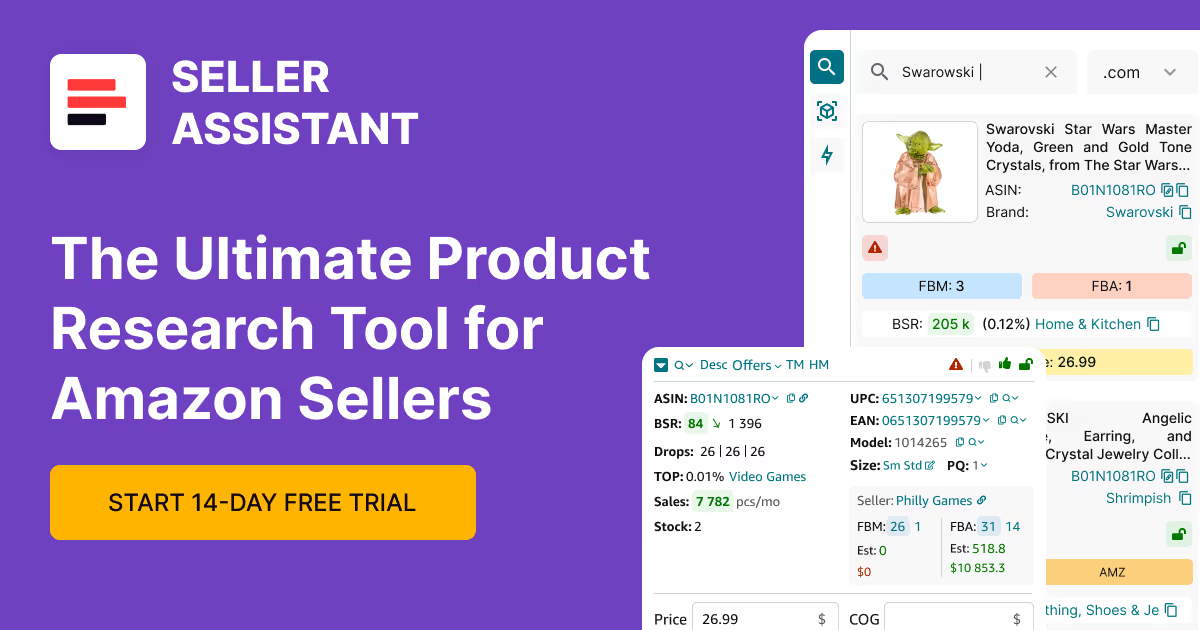
.svg)













